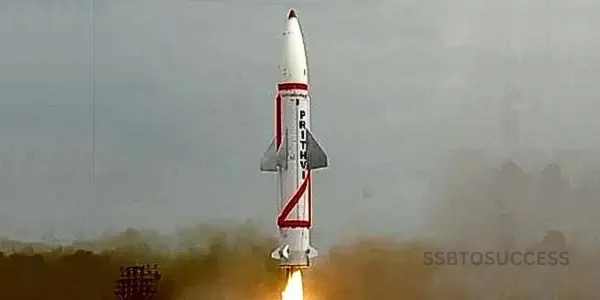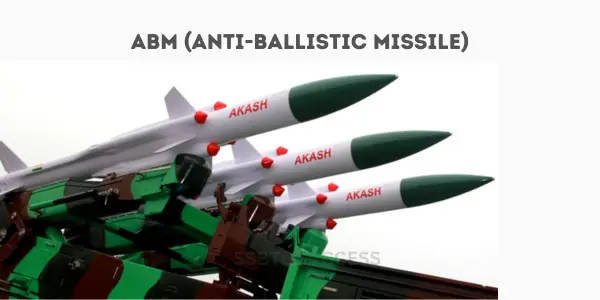An Anti-Ballistic Missile (ABM) is designed to detect, track, and intercept ballistic missiles that enemies attack. The concept of ABM was introduced first after the 1999 Kargil War with Pakistan by the Prime Minister of India, Atal Bihari Vajpayee. It consists of a double-tiered system, In the first-tiered Prithvi Air Defense (PAD) / Pradyumna Ballistic Missile Interceptor and the second-tiered Advanced Air Defense (AAD) / Ashwin Ballistic Missile Interceptor. India follows the “NO FIRST USE” policy by providing the second strike capability.
Key Components of ABM:
Radar Systems:
Powerful radar installations are employed to detect and track incoming ballistic missiles, providing critical data for interception.
Sensors and Fire Control Systems:
Advanced sensors and fire control systems process information rapidly, enabling ABM systems to make quick and accurate decisions for interception.
Interceptor Missiles:
The core of ABM systems, interceptor missiles are designed to destroy incoming ballistic missiles. Various technologies, such as kinetic impact or directed energy, may be used for interception.
Phases of ABM Defense:
Boost Phase:
Intercepting missiles immediately after launch during the boost phase, though challenging, is considered an ideal scenario.
Midcourse Phase:
ABM systems primarily focus on intercepting missiles during the midcourse phase when they travel through space. This phase offers a larger window for interception.
Terminal Phase:
Intercepting missiles during the terminal phase, as they re-enter the Earth’s atmosphere, serves as the final line of defence, requiring precision and quick response times.
How ABM Work?
The interceptor missile has a mobile launcher, a secure data link for interception, and an independent tracking system. The Radar system has been installed to detect and track incoming ballistic missiles. When the enemy launches a missile, these tracking devices can track that missile’s direction and the respective speed. When the missile comes closer, the sensor and the fire control radar can lock the incoming missile and thus, the interceptor missile launches, which can destroy the Hostile missile.
Prithvi Air Defense (PAD) / Pradyumna Ballistic Missile Interceptor:

PAD was developed to intercept incoming ballistic missiles outside the atmosphere (Exo-atmospheric).
Generally, this PAD is designed for High-altitude interception. PAD is a two-stage missile with a maximum interception altitude of 80 km. The advantage of intercepting an incoming missile at such a high altitude is that the debris would not fall on the ground, and there would be no collateral damage. PAD was first tested in 2006, and due to its successful testing, India has become the Fourth country that can develop the anti-ballistic missile, followed by the United States, Russia and Israel.
Advanced Air Defense (AAD) / Ashwin Ballistic Missile Interceptor:
This missile intercepts incoming ballistic missiles within the Earth’s atmosphere. (Endo-atmosphere) at an altitude of 40 km. AAD is designed for High-altitude interception. The DRDO, the research and development wing of the Defence Ministry, developed the AAD Missile Defence system with the Hyderabad-based Research Centre Imarat (RCI).
Prithvi Defense Vehicle (PDV):
The PDV(Exo-atmospheric) is designed to take out the target missile at altitudes above 150 km.
Advanced Defense Vehicle (ADV):
ADV is an Exo-atmospheric interceptor designed to intercept and neutralize ballistic missiles outside Earth’s atmosphere.
Conclusion:
In the fast-changing world, strategic preparation and self-reliance are the new currency of defence. ABM offering a protective shield against potential missile threats is the new currency of defence nowadays. DRDO plays a pivotal role in safeguarding the nation’s security and continues to evolve; its contributions are integral to shaping the future of India’s defence system.


